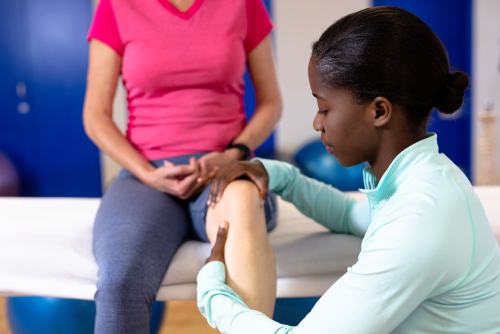Many people who develop osteoarthritis wonder: Is osteoarthritis genetic? The answer is both yes and no.
What is osteoarthritis?
Osteoarthritis is a complex condition that results from the breakdown of cartilage within a joint. As we age, our joints begin to break down due to wear and tear, causing inflammation and pain. In addition, physical trauma can also contribute to the development of osteoarthritis. Trauma can cause injury to the cartilage, which can cause it to crack and eventually disappear altogether. Missing cartilage leaves behind bone-on-bone contact, which causes pain.
Is who gets osteoarthritis completely controlled by genetics?
No. You cannot inherit osteoarthritis from your parents, but you can inherit the genetic predisposition to develop this degenerative joint disease. Individuals who have a family member with early onset osteoarthritis may have an increased risk of developing this condition themselves. Again, there is no way to “inherit” this disease genetically. The only thing that people are born with is the potential for developing osteoarthritis.
It’s typically what happens later in life that determines who develops the disease and who doesn’t. People who do things such as exercising regularly or wearing protective gear when playing sports may be less likely to develop arthritis. Exercising can be an especially effective preventive because it can help prevent weight gain and increase muscle strength. Both results can help ease stress on the body’s joints and reduce wearing.
How can physical therapists help treat osteoarthritis even if you have a genetic predisposition?
The good news about osteoarthritis is that it is treatable. Physical therapy is one effective treatment option. It can even help people with a genetic osteoarthritis predisposition slow the progress of their arthritis.
It can also help reduce some of the symptoms caused by osteoarthritis, such as:
- Joint stiffness — Your physical therapist can teach you how to gently warm up muscles before activity or in the morning. This can help improve blood flow and loosen stiff joints.
- Pain — Your physical therapist can take steps to help decrease pain and stress on your joints. This might include building you a custom therapeutic exercise plan. They can even show you how to use this plan to fight off pain when you aren’t in a PT session.
- Decreased mobility — Physical therapists can help patients increase their mobility and strength to make performing everyday tasks easier on their joints. Active Release Techniques® is one way your physical therapist can treat reduced mobility.
- Reduced range of motion — Patients with arthritis are often limited in the range of motion (ROM) they have in their joints. For instance, an osteoarthritis patient may not be able to bend or straighten their joints as far as a normal joint. An exercise program prescribed by a physical therapist can work to increase ROM in arthritic joints. This can allow patients more freedom in their daily activities.
Additionally, physical therapists can focus on treating issues related to osteoarthritis that aren’t always visible. They can address muscular imbalances that cause compensations that can lead to further joint damage. These specialists can also address changes in posture and gait.
Find a greater freedom from osteoarthritis symptoms with help from SOL PT
Our SOL Physical Therapy team can show you how to better manage the symptoms of osteoarthritis. But that’s not all they can do for you.They can also build you a unique physical therapy plan intended to ease your symptoms and help slow the progress of osteoarthritis.
Contact our team today to learn more about our arthritis treatment options or to set up an initial session.


